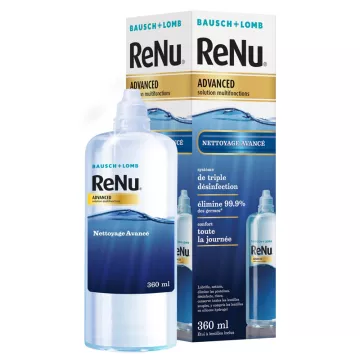
There are two main types of contact lenses: soft and rigid. Soft lenses are appreciated for their immediate comfort and are particularly suited to active people, as they adapt quickly to the shape of the eye and are available in daily disposable, bi-monthly, monthly or annual versions.
Rigid lenses, though less comfortable at first, offer excellent clarity of vision, especially in cases of keratoconus or severe astigmatism. They also allow better oxygen circulation and are long-lasting.
Hygiene is paramount when it comes to contact lenses. It's essential to clean and disinfect them daily with an appropriate solution. After removing the lenses, rub them gently in your palm with a few drops of cleaning solution, then rinse them before placing them in their case filled with fresh solution. Never reuse solution, and replace the lens case every three months to prevent the risk of infection.
The recommended wearing time varies according to the type of lens and the specific characteristics of your eye. In general, daily disposable lenses should be removed before bedtime, while some monthly lenses, designed to be permeable to oxygen, can be worn for extended periods, including overnight. However, it's crucial to follow your ophthalmologist's recommendations to avoid any complications.
Contact lenses correct most visual defects, including myopia, hyperopia, astigmatism and presbyopia. Thanks to technological advances, there are now high-performance options available for even the most complex prescriptions. Talk to your eye care specialist to determine the best option based on your vision and lifestyle.
If you experience discomfort, redness, blurred vision or watery eyes when you wear your lenses, this may indicate that your lenses are no longer suitable. You may need to adapt your prescription or lens type. It's also important to follow the recommended replacement schedule to prevent eye problems.
Yes, it's perfectly possible and even recommended to wear sunglasses over your contact lenses for optimum UV protection. Make sure your glasses offer 100% UV protection, especially if your lenses don't include a UV filter.
When you travel, make sure you take enough contact lenses, cleaning solution and a spare case with you. For long-haul flights, we recommend removing your lenses and wearing glasses to avoid dry eyes caused by air conditioning. In addition, always keep your lenses in your hand luggage to avoid loss in the event of a problem with your checked luggage.
Before placing a lens on your finger for insertion, examine its shape. If the edges of the lens form a perfect bowl (like a cup), it's the right way round. If the edges flare out slightly (like a plate), the lens is upside down. It's crucial to insert the lens in the right direction to ensure optimum comfort and avoid irritation.
It's not advisable to wear contact lenses while swimming or showering, as exposure to water can lead to eye infections, particularly from bacteria or amoebae in the water that can adhere to the lenses. If you must swim with lenses, it's best to use waterproof goggles to protect your eyes and lenses.
If you experience irritation while wearing your lenses, remove them immediately and rinse your eyes with saline solution or artificial tears. Examine lenses for deposits or damage. If irritation persists even after cleaning and reinsertion, remove the lenses and consult an ophthalmologist to avoid more serious complications.
Innovations in contact lenses include the creation of lenses with materials that are more permeable to oxygen, offering better ocular health and increased comfort for users who wear their lenses for long periods. In addition, advances in multifocal lenses enable people with presbyopia to see clearly at all distances without the need for additional glasses. Lenses with integrated UV filters also protect eyes from the sun's harmful rays.